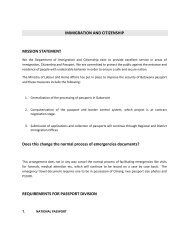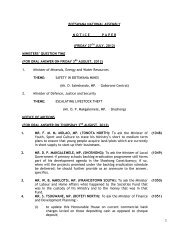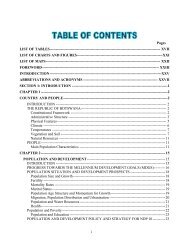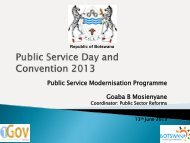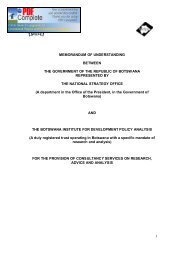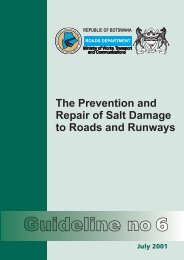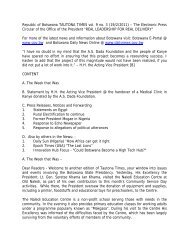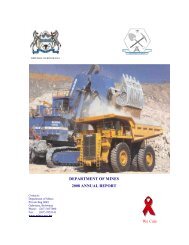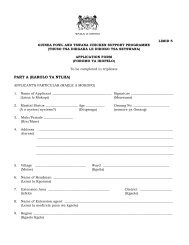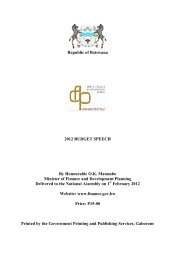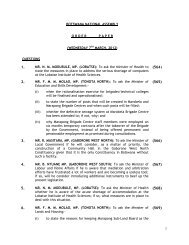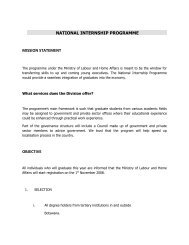National Nutrition and HIV/AIDS Guidelines for Service Providers of ...
National Nutrition and HIV/AIDS Guidelines for Service Providers of ...
National Nutrition and HIV/AIDS Guidelines for Service Providers of ...
Create successful ePaper yourself
Turn your PDF publications into a flip-book with our unique Google optimized e-Paper software.
younger siblings.<br />
° Sale <strong>of</strong> key assets like livestock to meet medical <strong>and</strong> nutrition costs.<br />
° Shift to less labour intensive farming systems (e.g. small stock, maize, tubers, melons, sweet<br />
reed).<br />
° Reduction in area cultivated <strong>and</strong> leaving more l<strong>and</strong> fallow.<br />
Mechanisms to improve food security <strong>and</strong> nutritional intake <strong>for</strong> PLWHA <strong>and</strong> affected families should be<br />
designed <strong>and</strong> implemented at household, community <strong>and</strong> national levels. These may include, diet<br />
diversification, increased production <strong>of</strong> nutritious, low cost <strong>and</strong> non labour intensive crop products,<br />
involvement in small income generating activities, keeping animals both as a source <strong>of</strong> food <strong>and</strong><br />
income.<br />
Adequate food <strong>and</strong> nutrition security have a buffering role to play in mitigating the impact <strong>of</strong> <strong>HIV</strong> <strong>and</strong><br />
<strong>AIDS</strong> at individual, community <strong>and</strong> national levels. There<strong>for</strong>e, more attention must be paid to <strong>and</strong><br />
special focus redirected to food security <strong>and</strong> nutrition considerations in the disease prevention, care<br />
<strong>and</strong> support.<br />
As a service provider you should be aware <strong>of</strong> strategies available to strengthen food access <strong>and</strong><br />
availability among households affected by <strong>HIV</strong>/<strong>AIDS</strong>. The following are strategies that PLWHA can use to<br />
cope in a food insecure situation:<br />
At Household Level:<br />
° Involvement in income generating activities such as small stock (goats, sheep, pigs, rabbits,<br />
etc.), poultry (chickens, doves, ducks, etc) <strong>and</strong> bee keeping.<br />
° Involvement in food production e.g. back yard gardening <strong>for</strong> consumption as well as <strong>for</strong> income<br />
generation<br />
° Using money economically <strong>and</strong> wisely, <strong>for</strong> example, by purchasing cheaper but nutritious foods<br />
<strong>and</strong> other seasonally or locally available foods.<br />
° Encourage utilization <strong>of</strong> veld <strong>and</strong> indigenous products e.g. motopi, mmupudu, moretologa,<br />
mogwana, moretlwa, mosata, maboa, morula, dikgeru/dicheru, mogorogorwana,<br />
makgomane, makatane, lerotse, etc.<br />
° Only sell assets such as livestock to generate extra income as a last resort.<br />
° Improving food preparation <strong>and</strong> practices to minimize nutrients loss <strong>and</strong> enhance nutrient bioavailability<br />
(refer to chapter 8 Food Safety).<br />
° Encourage <strong>and</strong> strengthen food storage <strong>for</strong> future use.<br />
58



